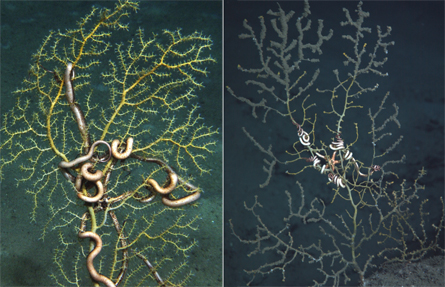- More than 2 years ago
Deepwater corals didn’t escape the ecological damage of the April 2010 Deepwater Horizon oil spill in the Gulf of Mexico. How much they were hurt depended on how close to the spill’s source they were.

Six months after the spill, marine scientists sent deep-diving submersibles down 290 to 2,600 meters to check out the damage at the bottom of the Gulf. At several sites more than 20 kilometers away from the ruptured wellhead, deepwater corals such as Paramuricea apparently continued to thrive. But just 11 kilometers from the spill, similar corals had lost tissue and were covered in places with a brown flocculent material.
Chemical analysis of that “floc” linked it to the chemical composition of oil spewing from the wellhead, suggesting the material in some way forms after exposure to oil. Because deepwater corals live so long and grow at a biologically glacial pace, it could be years before the full effect of the oil spill on deepwater corals is known, scientists say.
Helen White, a geochemist at Haverford College in Pennsylvania, and her colleagues report the finding online the week of March 26 in the Proceedings of the National Academy of Sciences.






